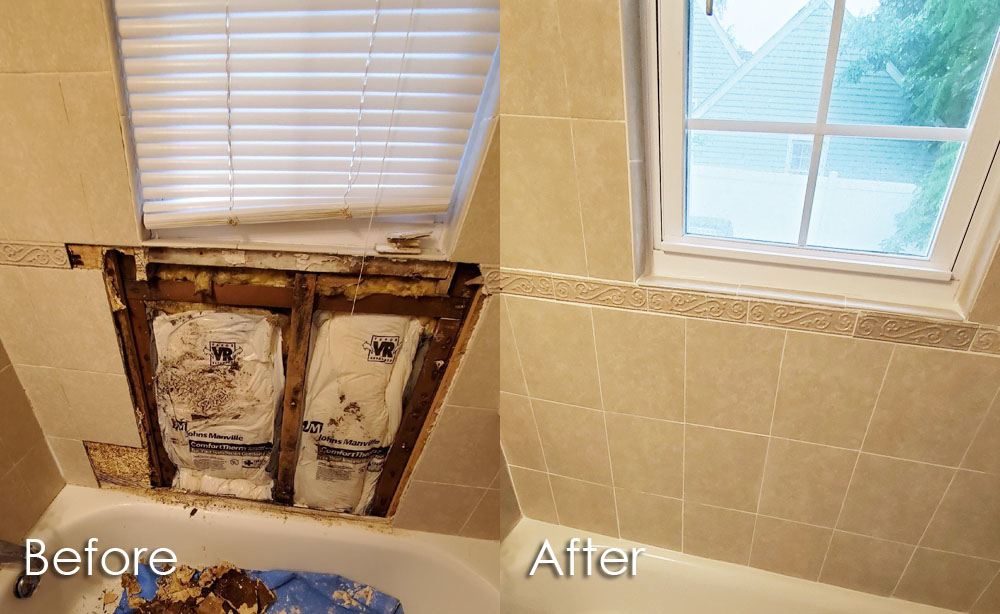How to Help Prevent Water Damage in Your Bathroom
How to Help Prevent Water Damage in Your Bathroom
Blog Article
Just how do you really feel on the subject of How to Repair and Prevent Bathroom Water Damage?

The restroom is very susceptible for moist accumulation and potential water damage because of the regular use of water in it. This short article uses basic assessment strategies to aid discovering water damage risks.
The regular use of water in the restroom makes it incredibly susceptible for damp accumulation and potential water damage. By inspecting it consistently, you can lower water relevant problems.
The following set of inspections is easy to perform and ought to be done once in every three months in order to keep your restroom in good shape and to prevent potential water damages caused by the bathtub, the shower, pipe joints and plumbing, sinks, cabinets, and the commode
Do not forget executing these examinations and also be detailed while executing them. Bear in mind that these easy evaluations can save you a great deal of cash by supplying very early indicators for water damage
Sinks and Cabinets
Sinks and also closets are subjected to wetness and humidity daily and also are usually ignored. Check frequently under the sink and on the countertop over it. Fix any drip in the trap as it might suggest drainpipe issues. Take a look around the sink, slow draining pipelines might indicate a blocked drainpipe. Replace sink seals if they are cracked or loosened.
Tub and Shower
The shower and also tub call for special attention and also maintenance. Check the floor tiles as well as replace if fractured. Make certain that there is no missing cement between the tiles. Check and also change cracked caulking at joints where the wall surfaces satisfy the flooring or the tub. Clogged drains pipes as well as pipelines issues will certainly prevent the bath tub from drying as well as may suggest serious troubles below the bath tub. Talk to a professional promptly to prevent architectural damage. Focus on discolorations or soft locations around the bath tub walls as they might indicate an interior leak.
Plumbing
Signs for water damages are tough to discover since a lot of pipes are set up inside the wall surfaces.
Pay special focus to floor covering and wall surfaces dampness as well as discolorations as they may suggest an invisible plumbing problem. Examine moisture levels in adjacent rooms also.
The Bathroom
The commode is a susceptible water joint. Examine the water lines and look for leakages around the toilet seat, in the pipe, and also under the water tank. If you find any indications of dampness on the floor around the commode, check for leaks in the toilet edge and also tank seals.
Understand that hanging commode dish deodorants boosts the opportunities for clogs.
Water Damage Signs In The Bathroom To Avoid Cleanup
Musty smell
This is one of the easiest signs to catch because musty smells are so odorous. The damp, earthy, moldy smell should be a big red flag. The smell will develop when moisture gets trapped in surfaces, and begins to facilitate mold growth. Leaking pipes under cabinets, inside walls, and behind shower fixtures will cause moisture to stay trapped and not dry, which will lead to mold growth and spread. As soon as you notice any musty smells in your bathroom, have it checked for hidden water damage and cleanup signs.
Visible mold
If the smell isn’t there to give it away, sometimes you will actually see mold growth. Finding mold in your bathroom is a serious problem, because mold is very harmful to your health. By the time mold growth is visible, it also means that water damage has already occurred and been present for some time. The only way the mold problem can be resolved is to find the source of the moisture and get it stopped. To safely and adequately remove mold, you need to have professionals handle the remediation. Do not waste any time in getting mold problems addressed, fixed, and sanitized so that you can protect you and your family from the many respiratory symptoms caused by mold exposure.
Damaged floors
Bathroom floors should be able to withstand some exposure to water while still remaining in good condition. However, when excess exposure or water leaks occur, they will begin to damage even the most water-resistant flooring. If you notice any cracking, bubbling, staining, or warping on your bathroom floors, there is probably a water leak somewhere causing the distortion. If you notice areas of the floor have become softer, or even have a spongy feeling, there is probably damage to the subfloor. Subflooring is typically made up of plywood. When plywood is exposed to water or moisture, it will absorb it. Once it has become saturated, the weight of the excess water will cause the wood to swell and soften. Check the floors in your bathroom frequently to catch any of these sings before they lead to damaged subflooring.
Changes on walls
When water leaks behind walls, it will cause changes in the drywall. Peeling plaster, blistering paint, and soggy wallpaper are all good indicators that excess water is building up behind the wall. Water leaking behind drywall will cause it to swell and be soft to the tough. If you start to notice gaps along the trim of your walls, or where tile meets the wall, it could also be a strong indicator that there is a leak behind the wall. Any changes, distortion, or damage on the walls should be evaluated as soon as you notice it to prevent further water damage and cleanup.

We had been made aware of that article about How to Repair and Prevent Bathroom Water Damage from someone on another domain. If you please take a moment to promote this blog post if you enjoyed reading it. Many thanks for your time. Come back soon.
Start Now Report this page